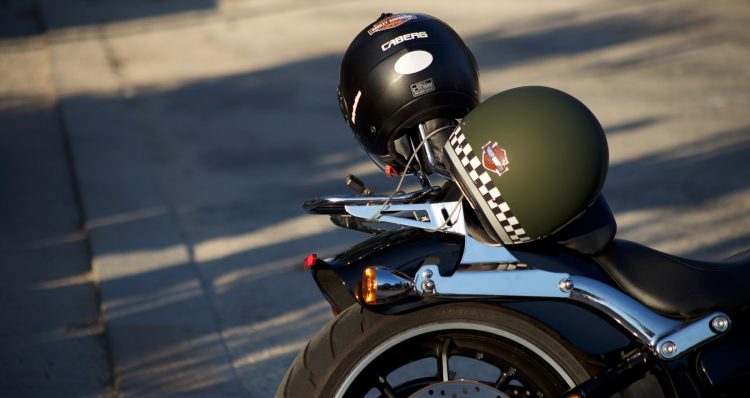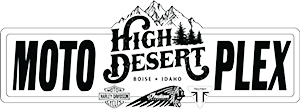
How to Buy the Right Motorcycle Helmet
Jade Jesser | December 23, 2019 | 0 | Helmet , Laws , Riding , ShoppingIn the summer of 2018, a small motorcycle community outside of Boise, Idaho, suffered the loss of a member on a casual ride near the Anderson Dam Reservoir. It was a day of echoing sobs and tear-filled memories, relatable to many who share a love for the ride.
Tragedy can be around any corner whether you are traveling cageless or not, but there is one thing that a surprising amount of riders only consider after the fact: nearly 40% of all the motorcycle fatalities could have been prevented by wearing a helmet.
Don’t worry, this isn’t an article to guilt you into buying a helmet.
Rather, we are going to give you some info to help you choose which helmet is best for you when you decide to.
Step One: Is it the Law?
If you live in one of the 19 states with mandatory helmet laws, then you probably already know the information in this article. There’s no real rhyme nor reason as to which states require helmets, so if you’re going to ride across state lines, you might want to be wearing a lid.
Make sure you understand the State’s law you are riding in, and take some time to look up any laws for locations you might be unfamiliar with.
Step Two: What are the Safety Ratings?
Motorcycling is loved by millions worldwide, which means that helmet production goes worldwide too. Many manufacturers list certification ratings for use in Australia, New Zealand and Japan. In Europe, for example, the U.N. Economic Commission for Europe sets a standard level of protection for helmets in Europe known as ECE22.05.
In the United States, we are primarily focused on two types of certification:
- DOT – The United States Department of Transportation’s minimum standard level of protection for helmets.
-And-
- Snell (M2015) – A non-profit in the United States with stringent safety standards.
Which safety standards you choose is primarily up to you, HOWEVER, it might be imperative that you review your motorcycle insurance policy as to any potential prerequisites for safety standards in order to remain covered in case of an accident.
Never trust the fine print, people.
Step Three: Measure the Noggin’!
Before you even go to a store, you have to jump through a couple of basic hoops.
Whether or not a helmet fits properly has a significant effect on the outcome of an accident. Yet it isn’t just a measurement to figure out the best way a helmet can fit on your head, but how your head is shaped as well.
Have you ever wondered why two people that wear the same size of helmet can have completely different levels of snugness? It’s because their heads are actually shaped differently. Because of this, many helmet manufacturers have divided helmet shape into three different categories.
To figure out what your head shape is, you need a bird’s eye view of your head, as if you were looking straight down on yourself facing forward.
- Round: If your head looks more like a basketball than a football, you’ve got a round head.
- Oval: (Yes, I’m about to say it.) If your head is shaped like a football, then it’s considered oval shaped.
- Intermediate: If you can’t decide if you are round or oval, you probably have an intermediate shaped head. It’s somewhere between the two.
While helmet shape contributes to overall comfort and safety, it doesn’t do much for you if its three sizes too big, or won’t fit over the top of that thick skull or yours. In order to figure out the best fit, you’re going to need a measuring ribbon, and the manufacturer’s size chart.
- Start by placing the tape about half an inch above your eyebrows, above your ears and around the back of your head at the point furthest from your brow. You might need someone to do this for you, because you really don’t want to make any mistakes.
- Once you get the measurement, compare it to the size chart.
- ALWAYS try the helmet on BEFORE you buy it.
- The helmet should sit squarely on your head with the top of the eye port just above your eyebrows.
- A properly fitted motorcycle helmet will not go on easy at first but loosen slightly as it is broken in.
- The helmet should fit snug around your head and face with no pressure points. Some products come with pads that can be adjusted for better fitting. Remember, if the helmet moves, or your fingers fit easily between your head and the helmet, you better get a smaller size.
Step Four: What Will You Use It For?
This is one of the most important steps to choosing a lid, and it’s often forgotten, especially if you already have reservations about wearing a helmet in the first place. However, why you are wearing a helmet is a huge factor in what you decide to buy.
For example: Is this your day-to-day transportation, or just for fun?
Throwing on a helmet for safety for an afternoon ride is one thing, but if you are going to be wearing the thing 5 or more days a week, you need to get something that takes care of many different types of situations.
You’ll probably want to pull out most of the stops and get the best helmet within your budget if your motorcycle is your primary form of transportation. Helmets with ear protection, that are ready for weather changes, and different lighting conditions are important, as well as comfort. You’re not going to want something that fits poorly if you are going to wear it everyday.
On the other hand, if you are only going to ride a few hours a week, or are planning on being a passenger, then something that takes care of safety standards will suffice.
Another consideration would be whether or not you will be riding with a group, in which case, Bluetooth or radio capabilities might be important to you. One of the greatest parts of being on a bike is the camaraderie shared by riders, so even if you aren’t riding in groups now, you might want to later.
Lastly, if you are going to be doing some track riding or even racing, the helmet you want to get will need better ventilation, and form fitted for being in a racing position.
Make sure you know what you are going to be using your bike for before you decide to buy.
The Final Step: Features and Appearance
Some things in life are more important than others.
Like looking good! Just kidding…but honestly, why not look good while you are being safe on your bike? You can do both! There are many different styles of helmets out there that can accommodate someone who wants to look and feel confident. However, finding the perfect looking helmet might just cost you some extra dollars.
You also might need to factor in if you are going to be wearing glasses for protection, or prescription. Some designs just aren’t conducive for the addition of such amenities. Sometimes, you may want to opt for a helmet that has all the features your sunglasses have just for convenience.
How heavy a helmet might also be a factor, and that can be directly related to the material the helmet is made from. Carbon fiber helmets are the lightest, but the most expensive, whereas Polycarbonate is a bit less expensive but significantly heavier.
In any case, appearance and amenities are all up to you, and you’ll pay for them in the end. Yet just like the idea that these types of things should be considered the least important when choosing a helmet.
Ultimately, getting something that is functional and fits should be your number one concern.



